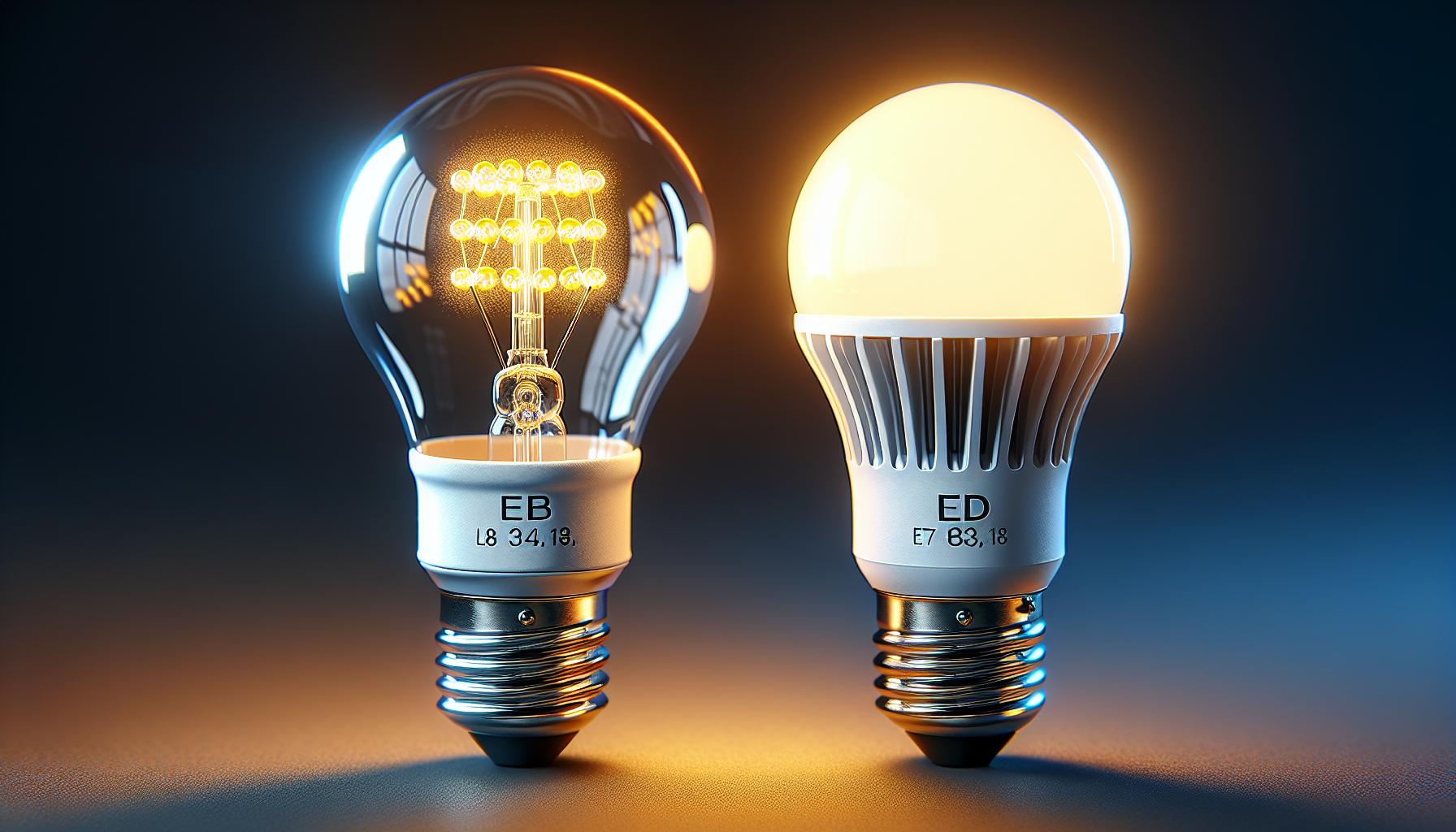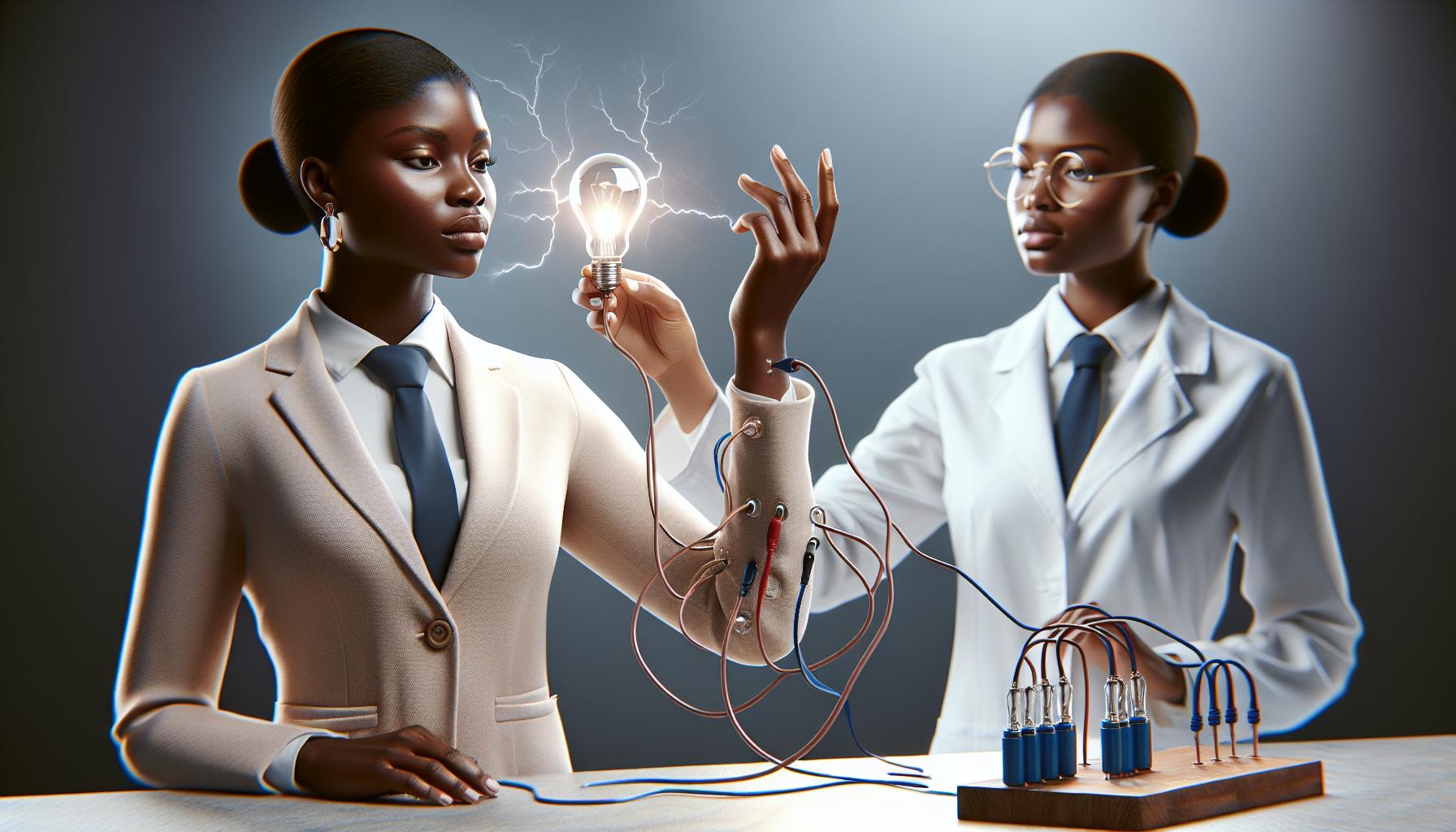Ever wondered if you’ve got what it takes to literally light up a room? It’s not just about your dazzling personality—what if you could actually illuminate a light bulb with your own two hands? It sounds like a superpower, but it’s a question that’s sparked curiosity and experiments for ages.

You might think it’s all about wires and electrical circuits, but what if there’s more to it? Imagine holding a light bulb and watching it glow at your touch. It’s a fascinating thought, isn’t it? Let’s explore the electrifying possibility of lighting a bulb with nothing but your own personal touch.
Exploring the Science of Electricity
Imagine you’re holding a light bulb, and with a single touch, it comes to life, emitting a warm glow—sounds like a scene straight out of a sci-fi movie, right? But to understand the likelihood of this, let’s dive into the science of electricity. In essence, electric current is the flow of electrons through a conductor. For a light bulb to illuminate, a complete circuit needs to be established for electrons to move and energy to transfer.
Your body, containing about 60% water, is somewhat conductive. Now, you might have heard about something called ‘body capacitance.’ It’s your body’s ability to hold an electric charge, albeit a very small one. Have you ever shuffled your feet across a carpet and then zapped something or someone with static electricity? That’s body capacitance at work!
When you come in contact with a conductive material, you can transfer those static electrons. Here are the crucial factors that dictate if you can light a bulb with your touch:
- Conductivity: How well you can conduct electricity.
- Voltage: The amount of potential energy you can generate.
- Resistance: Opposition to current flow, both in you and the bulb.
To take a closer look:
- Conductivity varies among different people due to factors like moisture, electrolyte levels, and skin thickness.
- Voltage sufficient to light a bulb typically requires more than just static electricity.
- Resistance is reduced when the skin is moist, which is why a sweaty touch might do more than a dry one.
Light bulbs in the home often require a voltage far beyond what the human body can naturally provide. However, low-voltage LEDs could potentially flicker to life under the perfect conditions. It’s also worth mentioning that in controlled setups, there are devices that can amplify body capacitance to light LEDs, hinting at the fascinating relationship between bioenergy and electricity.
So, as you embark on your next DIY project or flip the switch in your home, remember these intricacies that make lighting up a space a marvel of both design and science. Wouldn’t it be a nifty trick to add to your lighting expertise? Keep tinkering and who knows—someday, your touch might just become a little more enlightening.
How Does a Light Bulb Work?

Imagine walking into a room and with a simple flick, you bathe the space in warm, inviting light. It’s something you’ve done countless times, but have you ever paused to wonder how that globe hanging overhead works its magic? Well, you’re in for a treat.
At the heart of every light bulb is a fundamental principle: convert electrical energy into light energy. Traditional incandescent bulbs, which you might remember from your grandma’s house, accomplish this through a process called incandescence. This occurs when an electric current passes through a thin filament, typically made of tungsten, heating it to a temperature that produces light. The filament is encased in glass, which prevents it from burning up by keeping oxygen out.
If you’re into home DIY projects, you might be more familiar with the newer kids on the block – LED bulbs. LEDs (Light Emitting Diodes) work on a completely different principle. They use a semiconductor material which emits light when an electric current passes through it. This process, known as electroluminescence, is what gives LED bulbs their longevity and energy efficiency, making them a favorite for both your household chores and the planet.
What’s more, both kinds of bulbs rely on a consistent flow of electrons to maintain their glow. So when you touch a low-voltage LED with just the right amount of charge and conductivity, it’s not just about making a connection – it’s about sustaining that flow long enough for a visible light to be emitted.
As someone who is passionate about lights, you can appreciate the elegance of these devices. Whether using filaments or semiconductors, the underlying science is all about channeling energy in the right way to brighten up your world. Isn’t that electrifying? Now, experiment with different types and see the wonder unfold as you tune the ambiance of your rooms to your liking, all while saving energy with each switch you flick.
The Power of Conductors and Insulators

« Difference Between A15 A19 Light Bulb: Choose the Right One
Why Do Light Bulbs Stop Working? Uncover the Surprising Reasons »
If you’re knee-deep in a DIY project, you’ve likely come across the terms “conductors” and “insulators.” In the realm of electricity, these materials are as essential as a trusty screwdriver in your tool belt. Conductors are the materials that easily allow electrons to flow through them, making them the go-to choice for creating circuits. A classic example is copper, renowned for its excellent conductivity and used extensively in wiring and electrical components.
On the flip side, there’s the unsung hero: the insulator. Insulators, such as rubber or glass, resist the flow of electrons. They protect us from electrical shocks by covering the conductive parts of a cable or device. Now, while you might not get a light bulb to glow by holding a cable wrapped in an insulator, understanding the balance between these two is crucial for any lighting endeavor.
- Conductors: Allow electricity flow
- Metals like Copper, Aluminum
- Insulators: Prevent electricity flow
- Materials like Rubber, Glass, Plastic
When you’re wiring your home or just installing a new lamp, this knowledge comes in handy. It could be as simple as knowing why lamp cords are coated with plastic—a perfect insulator—to keep the electric current on the right path, right up to the bulb waiting in anticipation to bathe your room in light.
Imagine if we could make your entire wall a switch, with a mere touch bringing your space to life. It’s not just fantasy; certain paints mix conductive materials to create touch-sensitive surfaces. It’s a delicate balance, though, and every light wizard knows that too much conductivity can lead to short circuits and safety hazards. Likewise, an overly insulating environment means no electric party for your light bulbs.
The dance between conductors and insulators is a beautiful choreography that brings light into our homes. Every light bulb owes its glow to the precise arrangement of these materials. So next time you flip that switch, remember it’s not just a simple action but a celebration of this exquisite electrical ballet.
Can the Human Body Conduct Electricity?

You might find it shocking, but your body is a conductor of electricity. Ever felt a static spark when touching a doorknob? That’s a tiny example of electrical conductivity at work. Your body is mostly water and it contains minerals like sodium and potassium, which dissolve into charged particles called ions. These ions are conductive and allow electricity to flow through your body.
So how does this relate to lighting a light bulb? If you’ve ever seen those science experiments where someone lights a bulb by touching two parts of a circuit, you’ve witnessed the human body’s conductive property in action. Your body can complete an electrical circuit, allowing current to flow through it, just like a copper wire would.
But don’t get too electrified by this idea – there are limits. The human body has resistance; it’s not as conductive as metals like copper. The voltage has to be just right for the current to pass through safely and effectively. If you were to attempt a home DIY project involving direct interaction with an electrical circuit, knowing the ins and outs of safety is imperative. This includes understanding your own resistance and the potential of your body to influence electrical circuits.
Still, in controlled and safe environments, harnessing this knowledge can lead to incredible home innovations – like capacitive touch light switches, where a simple touch can control the illumination of a room. The electrical properties of the human body can interact with these devices, giving you a magical control over light, seemingly at your fingertips.
Remember, as much as your body can interact with electrical fields and currents, appropriate insulation is key in any DIY project. Mixing your passion for lighting with a healthy respect for the conductor-insulator dynamic ensures that your creative endeavors shine bright without a hitch. So while you might not be a human lightbulb, your innate electrical capabilities are fascinating and functional in the world of lighting.
Conducting Electricity to Light a Bulb

You’ve already discovered that your body can act as a conductor, a path for electricity to flow. Let’s harness that knowledge to light a bulb – a feat that’s not just theoretically possible but also practically achievable with the right approach.
Imagine a simple circuit where a light bulb is powered by a battery. The two ends of the bulb are connected to the positive and negative terminals of the battery. When you insert a conductor like copper wire, electrons flow, completing the circuit, and voilà, you’ve got light!
What if you substituted part of that wire with something else? That’s right, your own hand. By holding one end of a wire connected to the battery’s terminal and touching the base of a light bulb with your other hand, you are essentially offering yourself up as a human wire. Of course, the resistance your body presents isn’t as low as copper’s, but under certain conditions, you can still become part of the circuit and help that bulb shine.
Safety is key. Honestly, dangling with wires and electricity isn’t child’s play. You should ensure the voltage is safe enough to prevent any harm—typically, a very low voltage is required for such experiments.
With DIY projects scaling up in complexity and creativity, it’s essential to understand that lighting a bulb with your body isn’t just for show. This principle has profound implications in devices like touchscreen technologies, where your touch can change electrical states, causing actions to happen — like illuminating a screen.
DIY lighting projects might inspire you to integrate similar concepts into your home. Imagine touch-activated lamps or wall lights that respond to your physical presence. While these innovations tap into the basic idea of the human body conducting electricity, comprehensive designs rely on more nuanced switching mechanisms than simply being part of a circuit. Remember, these devices also use sophisticated insulation to ensure that the user is always safe from electric shock.
Consider the thrill of turning on a light bulb using your body’s conductivity. As you take on lighting projects, there’s always more to explore and create in the electrifying world of circuits. Just keep your safety in the forefront and let your imagination illuminate the possibilities.
Conclusion
So there you have it! You’ve seen how with a bit of creativity and a focus on safety, you can indeed become a part of an electrical circuit and light up a bulb. It’s a fascinating way to experience firsthand the principles of electricity and conductivity. Just remember to keep the voltage low and never compromise on safety. Now go ahead, get hands-on and light up your understanding of circuits – who knows what bright ideas you’ll come up with next!
Frequently Asked Questions
Can the human body conduct electricity?
Yes, the human body can conduct electricity. It can become part of an electrical circuit, as demonstrated by holding one end of a wire connected to a battery and touching a light bulb base with the other hand.
How can you use your body to light a bulb?
By becoming part of an electrical circuit, if you hold one wire end connected to a battery and touch a light bulb’s base with your other hand, your body can help complete the circuit and light the bulb.
Is it safe to conduct electricity through the human body?
It can be safe under specific conditions, such as using a very low voltage and not touching components with high electric current. Always prioritize safety when conducting such experiments.
Can the electrical properties of the human body be useful?
Yes, the electrical properties of the human body are utilized in technologies like touchscreens, and they can also be applied in DIY lighting projects and similar experiments.
Should I take safety precautions when experimenting with circuits?
Absolutely. Safety should be your top priority when experimenting with circuits. Always use low voltages and avoid exposure to high electrical currents to prevent harm.




